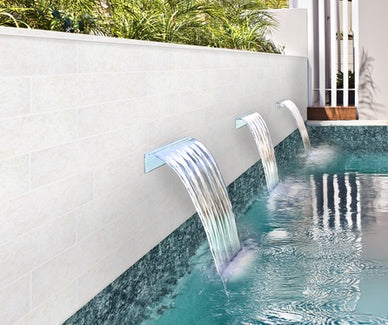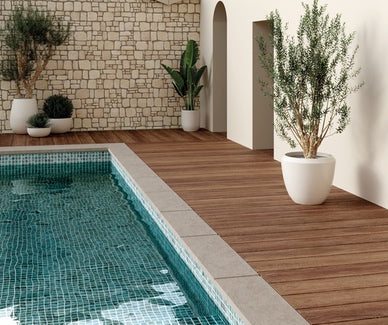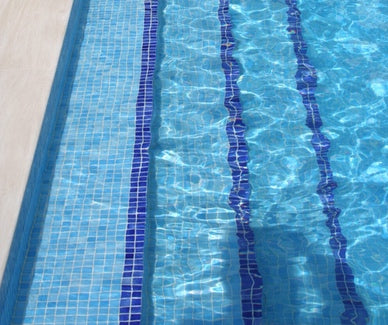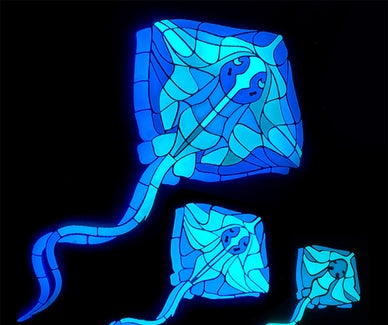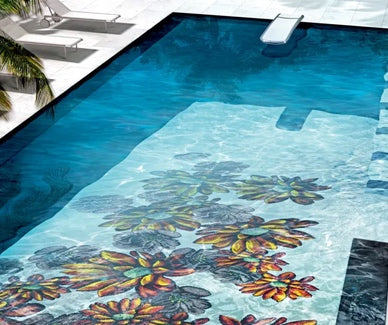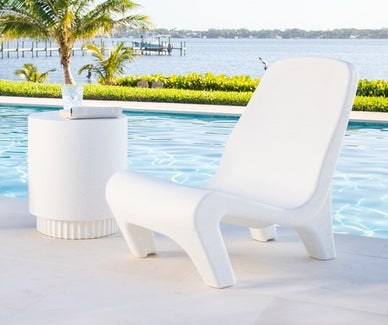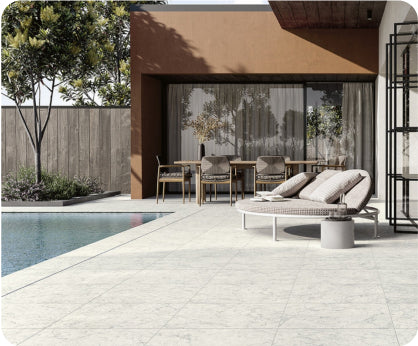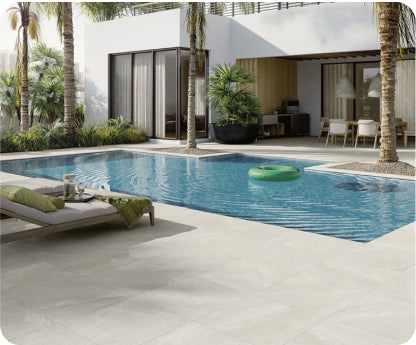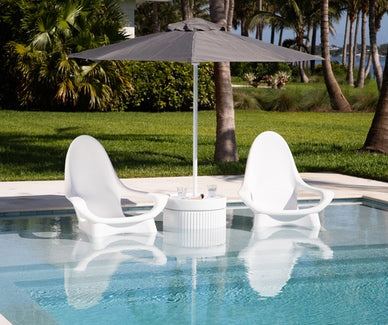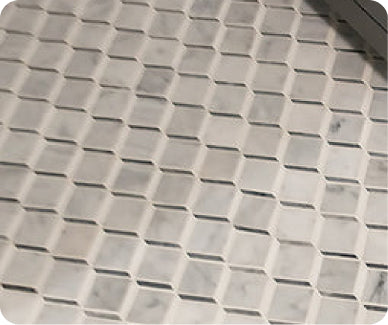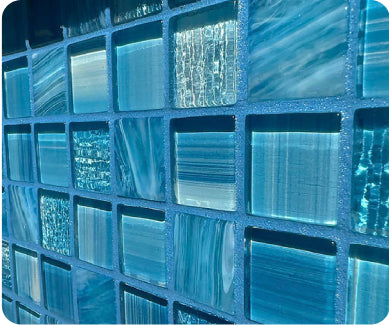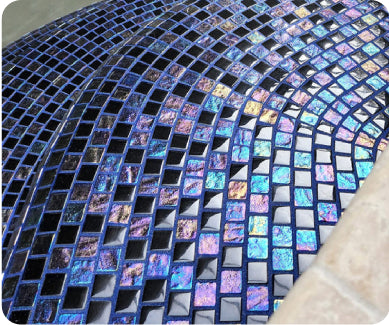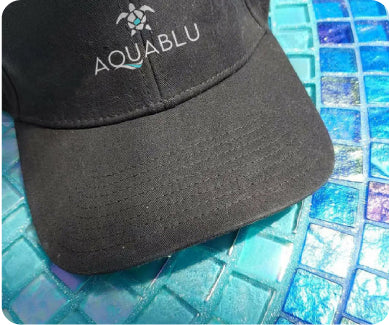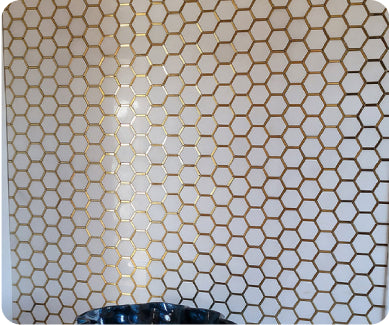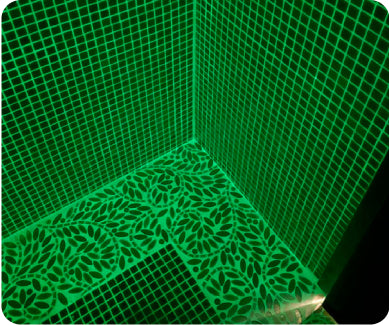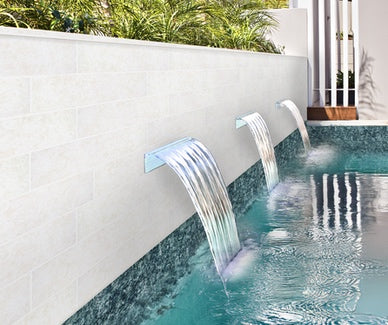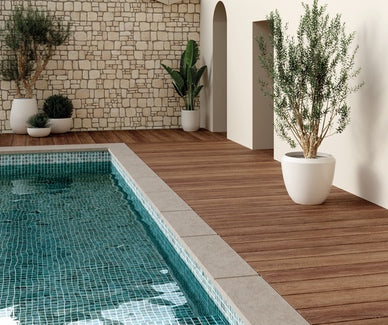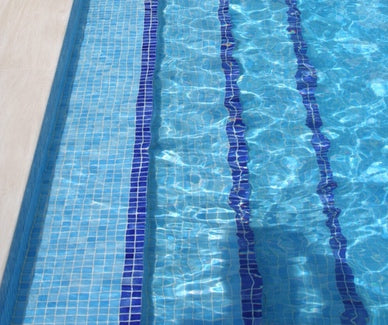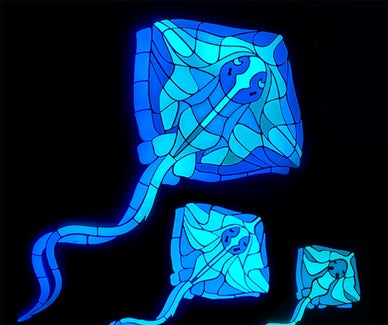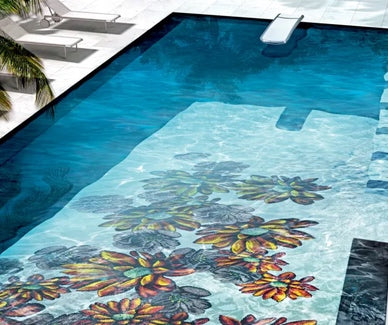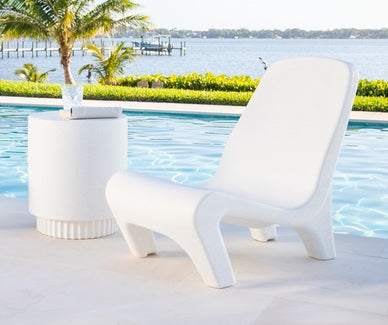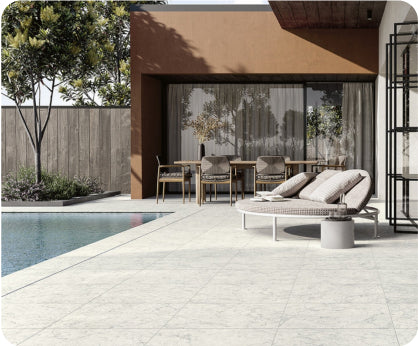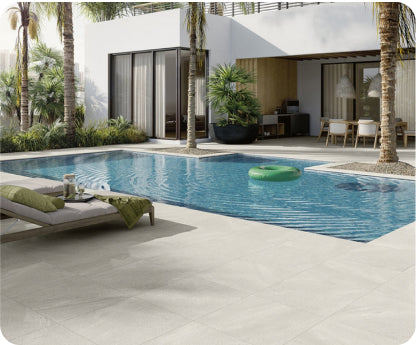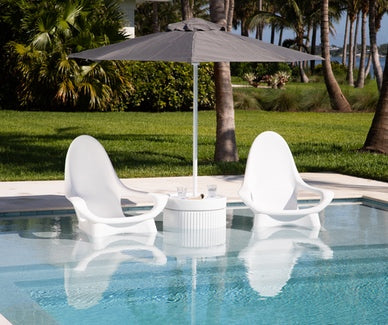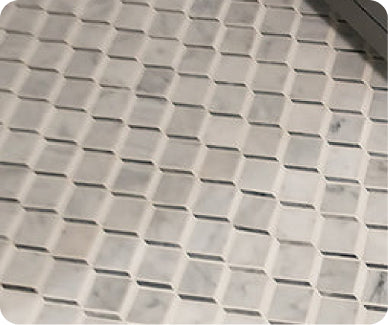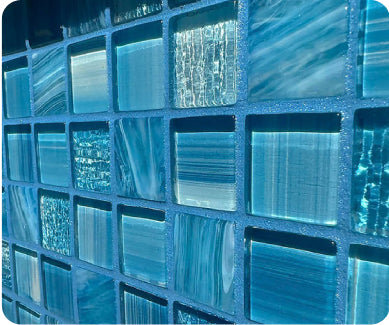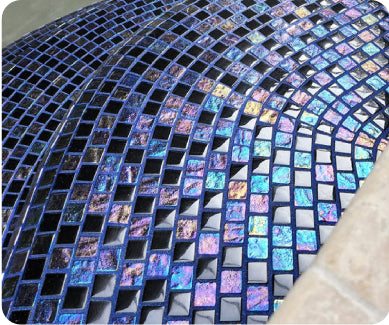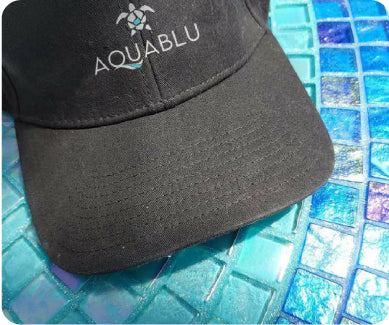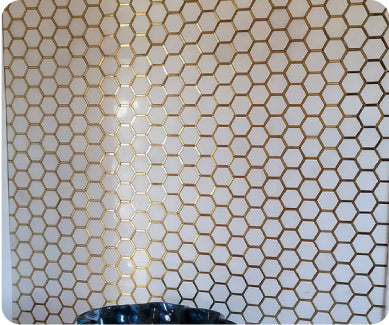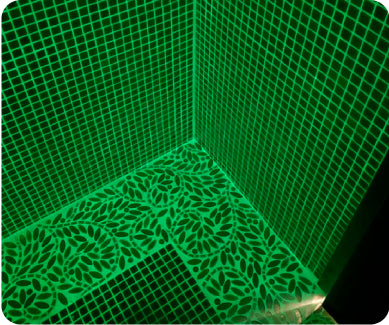Herringbone Tile Pattern: Creating Visual Texture

The herringbone tile pattern is a stylish, classic design that has a poetic or visionary feel about it. Some use the words dreamy and romantic.
The herringbone tile pattern as a mosaic tile is perfect for interior kitchen and bath walls and backsplashes. Or, as a glass mosaic tile, you can incorporate a glass tile herringbone tile pattern into any space that needs a little extra punch or visual texture.
Herringbone tile is an arrangement of rectangles with a distinctive “V” shape. The blocks can be rectangles or parallelograms. The block edge length ratios are usually 2:1, and sometimes 3:1, but need not be even ratios.
There are two ways to create herringbone: at a diagonal or 90 degree angle. The diagonal option is a bit softer and more classic while the 90 degree angle gives a more modern and geometric feel.
There has always been some confusion over the difference between a herringbone tile pattern and the chevron pattern. But they’re not the same at all. The key difference is in the zigzag joint. The herringbone tile pattern breaks at each section’s reversal, whereas the chevron pattern is a continuous zigzag.
The question most frequently asked about the herringbone tile pattern? Where the heck does it get its name? This trendy glass tile pattern is named after a fancied resemblance to the bones of a fish – such as a herring.
The earliest examples of the herringbone pattern can be seen in the intricate jewelry of the Ancient Egyptian elite and in fabric originating in Ancient Italy. In the Roman Empire, the herringbone pattern was used in road paving systems to create extremely durable and stable thoroughfares.
Even though it looks fancy it’s quite easy to make – simply place the short end of a subway tile against the long end of another subway tile, and build off that. There are many ways to use the herringbone tile pattern from a relaxing and minimal bathroom, to a statement wall with an extra pop of color.
Here are a few ideas on how to make the most of a herringbone tile pattern with beautiful mosaic tiles:
Neutral Herringbone Tile Pattern
Sometimes less is more. Herringbone glass tile in a simple white tile color and a crisp white grout line is an excellent selection. Although this look is commonly seen in traditional kitchens, it works just as well in contemporary and modern designs. Choose a classic 2 x 4 or 3 x 6 size for a traditional look. You could even try a 2 x 8 size for a herringbone tile pattern that shows off your wild side.
Dark And Colorful Herringbone Tile Pattern
Despite its traditional roots, herringbone tile can go trendy modern in a heartbeat. Simply add a dark moody colored tile and contrast it with a lighter grout line. The color will make the layout feel modern while the grout line emphasizes the overall herringbone pattern, adding graphic appeal to your space.
Also give some thought to using sparse pops of contrasting color in areas in a kitchen (or any interior wall for that matter) that needs a jolt. This can give a beautiful confetti-look to a tiled herringbone. While the overall effect is stunning, you will also appreciate the added depth that a contrasting color can create on a tiled wall.
Tranquil Colored Herringbone Tile Pattern
Soft colored glass mosaic tiles combined with herringbone’s emphasis on precision and angles creates a relaxing atmosphere underscored by a feeling of security. This is perfect for any space where you desire glass tile to reflect a calm and relaxing atmosphere. Try soft colors in showers or bathroom backsplashes.
Yikes Stripes!
If you’re looking to create a “let’s wake up” or energetic space, consider the herringbone tile pattern that simulates a wave effect. This interesting design is made by laying subway mosaic tiles diagonally with crooked lines of different warm colors that run horizontally – reminiscent of abstract waves. These colorful tidal wave vibes are great on kitchen walls or as accents. You could also use it on a shower wall if you’re into the beach scene.
The Two-Tone Herringbone Tile Pattern
Another popular herringbone tile pattern is alternating glass mosaic tile in two slightly different colors. This could be a bone white and cream, or two different beiges or even two greys of different shades. The two-tone herringbone tile pattern is an excellent way to add depth to any glass tile project. It’s a sophisticated option that will never get old and works for bathrooms, kitchens and just about any space because a two-tone herringbone tile pattern will add timeless character to any design. Normally, this design is set with glass tiles stacked in the 90 degree angle position.
Tiles for Sale
When you’re looking for glass tiles for sale for use in the herringbone tile pattern, there’s a wide selection to choose from in many different colors. Generally, you want to use thinner-type subway tiles, but here’s your chance to get creative and design a mosaic tile landscape for your kitchen or bath with your own personal touch.
---------------------
Questions? Talk to one of our experts. You can call us at (800) 971-1442 or fill out our contact form. You can visit our website at https://www.aquablumosaics.com/.

